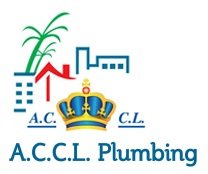Clogged drains can be a frustrating and messy problem, but with the right techniques and tools, you can effectively clear blockages and restore proper drainage. Here’s a comprehensive guide on how to unclog drains, including DIY methods and tips for preventing future clogs.
Common Causes of Clogged Drains
1. Hair and Soap Scum: Hair and soap scum can accumulate in pipes, causing clogs.
2. Grease and Food Particles: Grease and food particles can solidify in pipes, blocking water flow.
3. Mineral Buildup: Mineral deposits can accumulate in pipes, reducing water flow and causing clogs.
4. Tree Roots: Tree roots can infiltrate pipes, causing blockages and damage.
DIY Methods for Unclogging Drains
1. Plunger: Use a plunger to create suction and loosen blockages. Make sure to cover the overflow drain (if applicable) and plunge slowly and steadily.
2. Drain Snake: Use a drain snake (auger) to remove blockages deep within pipes. Feed the snake into the drain and rotate it to break up clogs.
3. Baking Soda and Vinegar: Pour baking soda and vinegar down the drain, followed by hot water. This natural method can help break down blockages and deodorize drains.
4. Chemical Drain Cleaners: Use chemical drain cleaners with caution, as they can damage pipes or cause harm if not used properly. Always follow manufacturer instructions and take necessary safety precautions.
Tips for Preventing Clogged Drains
1. Regular Maintenance: Regularly clean and inspect drains to prevent buildup and blockages.
2. Use Drain Screens: Use drain screens or filters to catch hair and other debris before they enter pipes.
3. Avoid Grease and Food Particles: Avoid pouring grease and food particles down drains, as they can solidify and cause clogs.
4. Be Mindful of What You Flush: Only flush toilet paper and human waste down toilets. Avoid flushing sanitary products, wipes, or other items that can cause clogs.
When to Call a Professional
If you’ve tried DIY methods and the clog persists, it may be time to call a professional plumber. They can:
1. Diagnose the Issue: Use specialized equipment to diagnose the cause of the clog and recommend the best course of action.
2. Use Advanced Tools: Use advanced tools, such as hydro-jetting or camera inspections, to clear blockages and inspect pipes.
3. Provide Preventative Maintenance: Provide preventative maintenance and recommendations to prevent future clogs and pipe damage.

